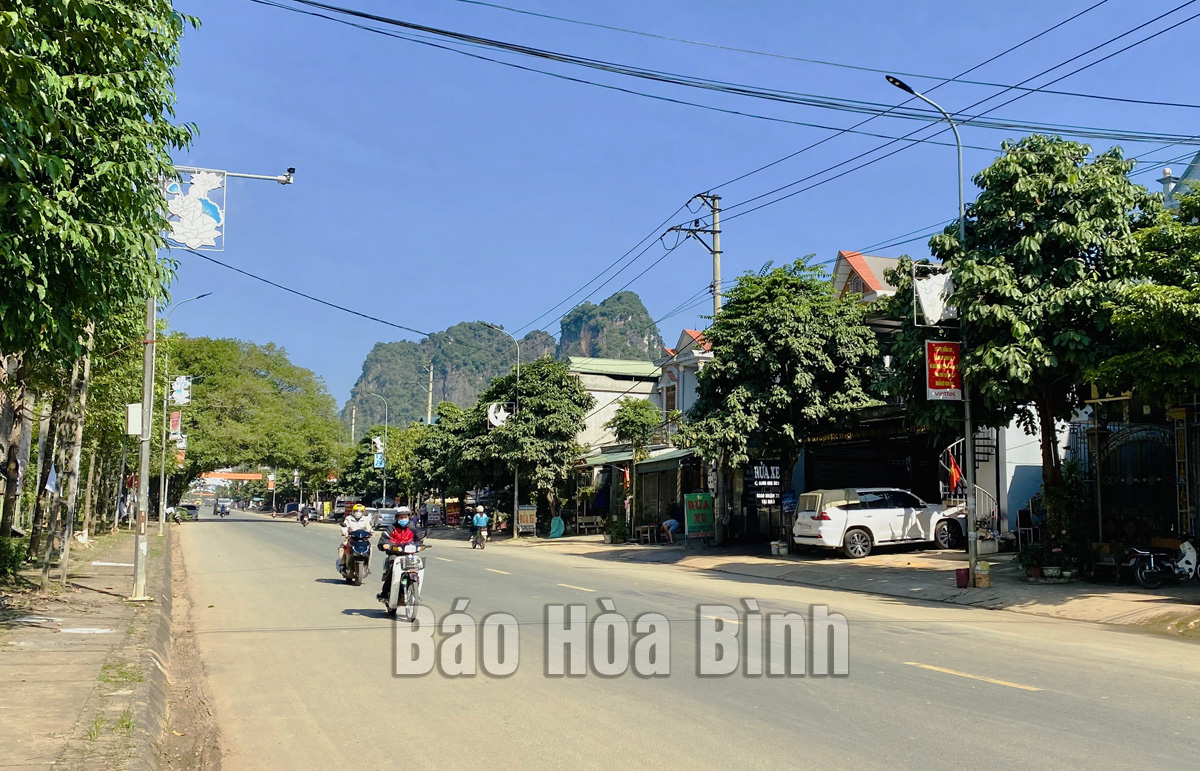Transport infrastructure of Tan Lac district is planned and invested concertedly, contributing to socio-economic development in the locality. Photo taken in Man Duc township.
Bui Van Hien, Chairman of the People's Committee of Man Duc township, said that as the centre of the district, the township has focused on attracting investment, developing various types of trade and services, and transforming the economic structure in a positive direction. In addition, tourism, trade, and industrial development activities have contributed to urban economic and service development.
In recent years, Tan Lac district has focused on planning and planning management, and well mobilised investment resources to develop urban infrastructure, thus gaining positive initial results. The district is implementing a series of investment projects in the fields of industry, trade and services. Some projects and works, when put into operation, have made a breakthrough in improving the transport infrastructure system, contributing to increasing the trading of goods trade, and meeting the travel demand of local people.
In the district’s urban development orientation in the 2026 – 2030 period, the district prioritises investment resources in urban embellishment and clean water infrastructure, and will speed up the implementation of the Ngoi Hoa road - National Highway 6 project.
In addition, the district will speed up administrative reform, support investment projects, develop economic sectors, build Dong Lai - Thanh Hoi and Phong Phu industrial clusters, thus making an important contribution to the district’s economic growth and restructuring, and creating jobs and increasing people's income./.



